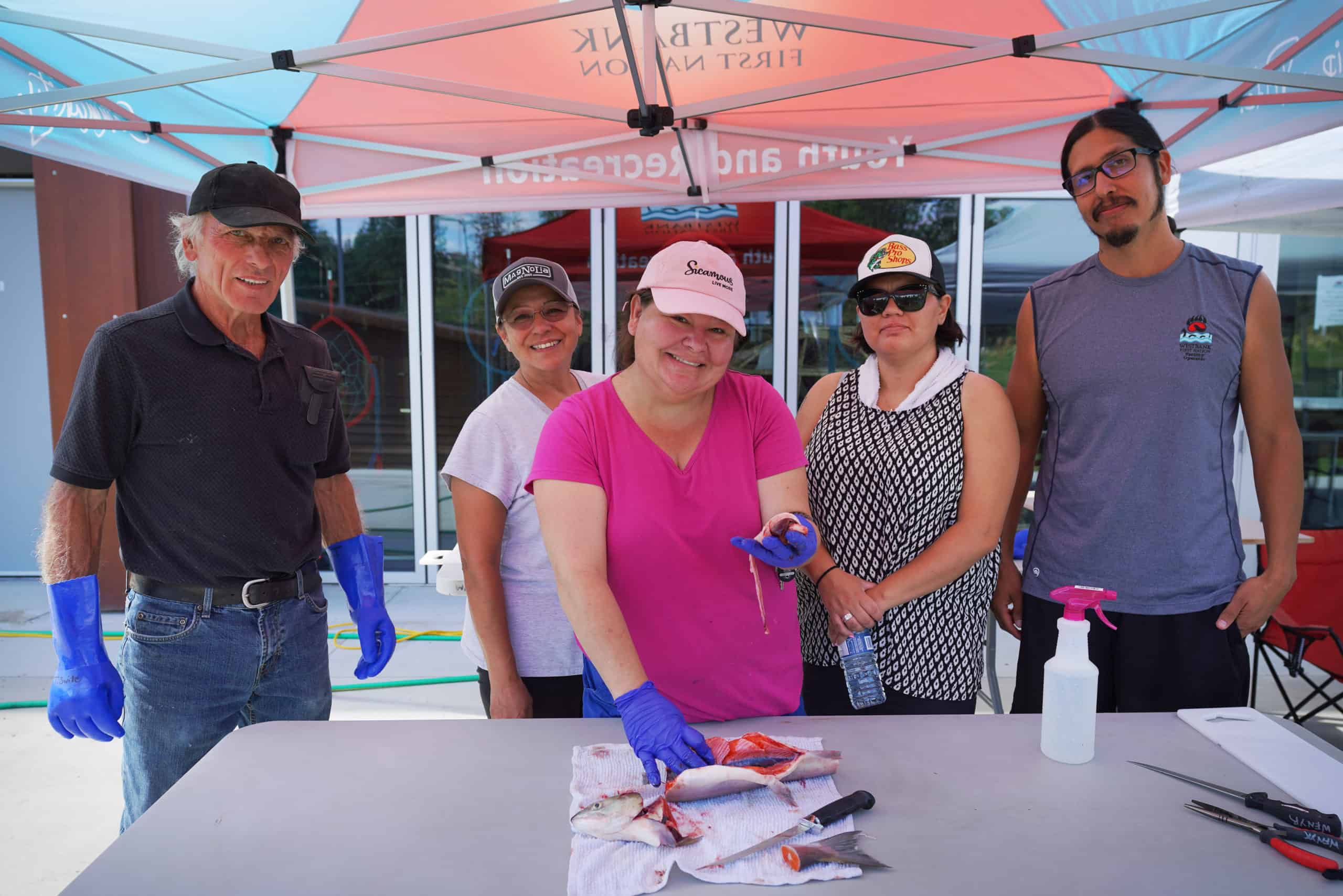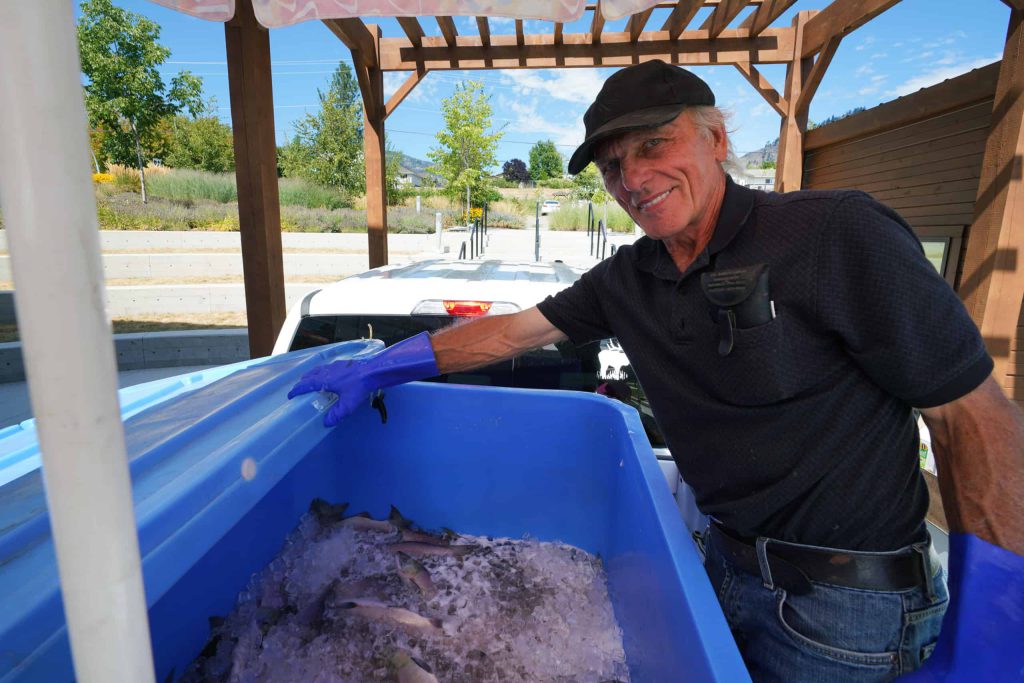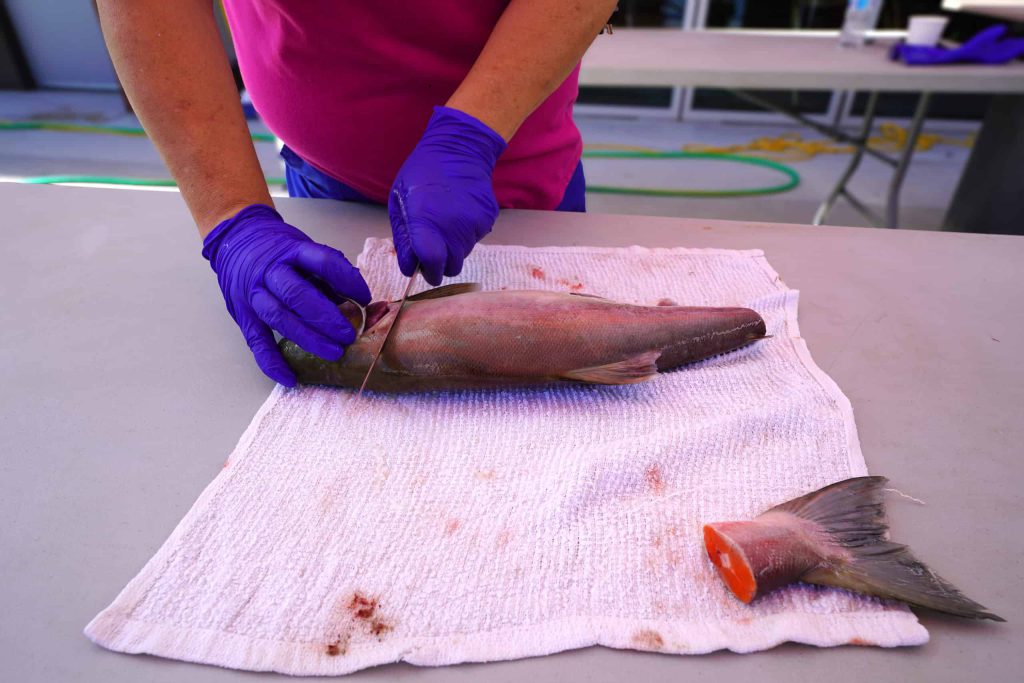Westbank First Nation distributes fish to its community members
As part of ONA’s efforts to restore traditional food systems and food sovereignty, WFN distributes its annual sockeye.

Every summer, Westbank First Nation (WFN) receives and distributes sockeye salmon to its community members, says Audrey Wilson, WFN’s membership service manager, at their fish distribution on Tuesday.
“Today is one of our yearly things that we coincide with the Okanagan National Alliance,” says Wilson, who is also a WFN member. “Every year, if the salmon are good, they [are] distributed out to … bands within the Okanagan Nation.”
Each summer, the Okanagan Nation Alliance (ONA) distributes fish to its eight member communities, including WFN. Youth are also encouraged to participate in the distribution, where they can learn how to filet and gut the fish.
The harvest is part of ongoing efforts to restore and revitalize traditional fishing practices that have been a part of the Syilx way of life since time immemorial. By restoring the salmon to Lake Okanagan, Syilx people can maintain their traditional ways of fishing, maintain fisheries and harvest fish.
According to the ONA website, “n’titxw or Chief Salmon is the chief of all things water. Historically, salmon was an important part for food and economic purposes but past and current decisions by government have limited ONA members salmon availability and access.”
The ONA has been working to restore these systems by reintroducing salmon to the Okanagan Lake. In an effort to accomplish this, in 2014, the ONA opened the kł cp̓əlk̓ stim̓ Hatchery, funded largely by the Grant and Chelan Public Utility Districts of Washington. It has the capacity to rear up to eight-million eggs. By restoring the salmon and maintaining waterways, ONA is actively restoring Indigenous food systems and ensuring food sovereignty for the Okanagan communities.
Fish distribution does, however, vary year to year. Due to low returns in 2019, according to an ONA community bulletin, “any communal distribution” was unlikely as “a result of poor migration conditions.”

But the salmon distribution has been running for five or six years, says Wilson.
This year, they had volunteers join the team to help in the gutting process. She explains that, in previous years, they have also gutted the fish for the Elders.
“We were just trying to help out the Elders … the ones that can’t do it anymore. So that was kind of our way of help – fileting them. And we had a gentleman come in and help with that, and teaching people, and then we’d freezer-bag them and then pass them on to the Elders.”
On the day of distribution, Leann Miller, with WFN’s membership department, demonstrated how to prepare the salmon by gutting and fileting it. Preparation included removing the head, tail, and taking the blood and guts out of the fish.
“It was just some of [the Elders] that love the fish, but they can’t do it anymore. So it was kind of helping and giving back to them,” says Wilson.

When it comes to distribution, Wilson explains that the amount of fish each person receives depends on the size of their family. For example, a family of four or more might receive four or five fish, while a single person would be given two.
Wilson says that they distribute fish evenly to all community members, and if there is extra at the end, people can come back for more.
“We want to make sure that everybody is getting, and then at the end, if we do happen to have, say, half a tote left, we’ll say, ‘Come on, whoever wants to come pick up extra are more than welcome.’ So we’d like to make sure it’s all given out in the same day.”
WFN received two totes this year from ONA. Each tote holds between 200 and 300 fish.
“I think this is a great opportunity for not only our Westbank First Nation, but I do believe it’s great for our whole nation,” says Wilson.
She says she believes in the good that fish distribution is bringing to the community.
“It’s really good for sharing with the Elders, teaching of the youth to learn the traditions that our ancestors had way back in the day,” she says.
“It brings the Elders and youth and everyone together working. And I think that’s very important for our community to learn some of the traditions that we’ve had.”
Author
Latest Stories
-
‘Bring her home’: How Buffalo Woman was identified as Ashlee Shingoose
The Anishininew mother as been missing since 2022 — now, her family is one step closer to bringing her home as the Province of Manitoba vows to search for her
-
‘NDN Giver’ exhibition showcases the art — and responsibility — of potlatching
From mugs to prints, masks and blankets, a new Bill Reid Gallery display celebrates the ancient Northwest Coast gift-giving tradition












